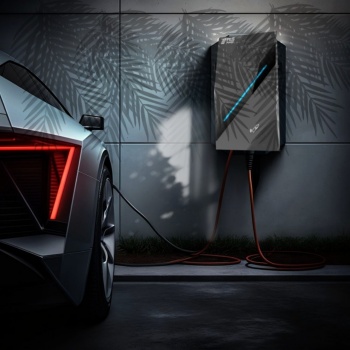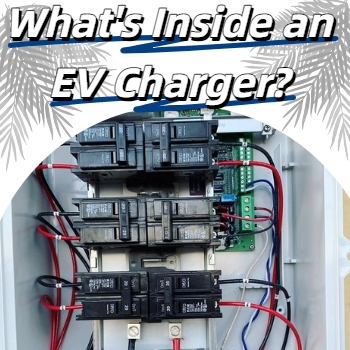Aug 18, 2025
With the popularization of electric vehicles (EVs), EV chargers have become key infrastructure. Have you ever wondered what's inside these devices that replenish energy for your car? Today, we're here to reveal the answer.
🔌Charging Interface: The Connecting BridgeThe charging interface is the connection point between the EV charger and the electric vehicle. Common standards like the European Type 2 plug and the American SAE J1772 plug ensure physical connection as well as electrical energy and signal transmission. Different vehicle models adapt to different interfaces, which is the first step in charging. For example, some Tesla models use their proprietary NACS interface, while most European brands prefer the Type 2 interface.
🧠Charging Controller: The "Commander" of ChargingThe charging controller can be called the brain of the EV charger. It adjusts parameters such as current, voltage, and charging time according to the needs of the electric vehicle. For instance, when the battery level is low, it increases the charging current to quickly replenish energy; when the battery is nearly full, it reduces the current to prevent overcharging. Like Easee's chargers, their controllers continuously monitor current, voltage, temperature, and humidity to ensure stable and safe charging.
💽Charger Host: The Core AssemblyThe charger host integrates numerous key modules. Among them, the power conversion module converts the incoming alternating current (AC) into direct current (DC) suitable for charging electric vehicles. The communication module is also crucial as it supports communication with the electric vehicle, transmitting control signals and status information. Take ChargePoint's chargers as an example; their software platform enables remote monitoring and management of chargers, which relies on a powerful communication module for data interaction.
🔋Power Supply: The Source of EnergyEV chargers need to be connected to a power source to obtain electrical energy. Usually, they are connected to an AC power source, which then undergoes operations such as transformer step-down, rectification, and filtering to convert into DC power for charging electric vehicles. Chargers with different powers have different requirements for power access. For example, a 7kW home charger typically connects to 220V single-phase electricity, while a 60kW DC fast charger needs to be connected to 380V three-phase electricity.
🖥️Control Panel: The User Interaction WindowThe control panel is the interface for user interaction with the EV charger, equipped with operation buttons and a display screen. Users select charging modes, start charging, and set parameters here. For example, EvoCharge's home smart chargers, through the control panel combined with a mobile app, allow easy management of charging and enable users to check charging progress, costs, and other information, enhancing usability.
🗣️Communication Module: The Information LinkThe communication module enables the EV charger to communicate with external devices. It not only interacts with the electric vehicle but also communicates with the cloud and management platforms. Through methods such as Wi-Fi, Bluetooth, or Power Line Communication (PLC), the charger can upload charging data in real-time and receive remote control commands. Ebyte's EC01-DNC 4G cat4 module can be used for charger communication, realizing bidirectional transparent data transmission from the serial port to the network server and ensuring stable data transmission.
🔐Safety Protection Module: The Safety GuardianThe safety protection module safeguards charging safety. It integrates multiple protection functions such as overcurrent, overvoltage, overtemperature, and short-circuit protection. Once an abnormality is detected, it immediately interrupts charging. For example, in high-temperature environments, if the charger's temperature exceeds the safety threshold, the protection module will automatically stop charging to prevent equipment damage and safety accidents.
💰Electricity Metering and Billing Module: The Cost StatisticianThis module accurately measures the electrical energy consumed during charging and settles fees according to billing standards. It includes an electricity meter and a billing unit, which can record detailed information on charging quantity and costs. At public charging stations, after users finish charging, they pay according to the results calculated by this module, ensuring fair and impartial billing.Among many charger-related products, although D30 is not a traditional charger device, it can play an important role in some large-scale charging facility scenarios, such as the management of large parking lots or charging stations. Its one-call-multiple-response function allows managers to communicate quickly, coordinate vehicle guidance, equipment maintenance, and other work, improving overall operational efficiency. Moreover, its multi-level automatic power-saving mode can ensure long-term use, meeting the real-time communication needs of managers in complex environments.
The internal structure of EV chargers is precise and complex, with all parts working together to provide safe and efficient charging services for electric vehicles. Understanding these can make us more at ease when using chargers and also fill us with confidence in the future development of electric vehicles. To learn more, please click https://www.fescharging.com/.
Read More

